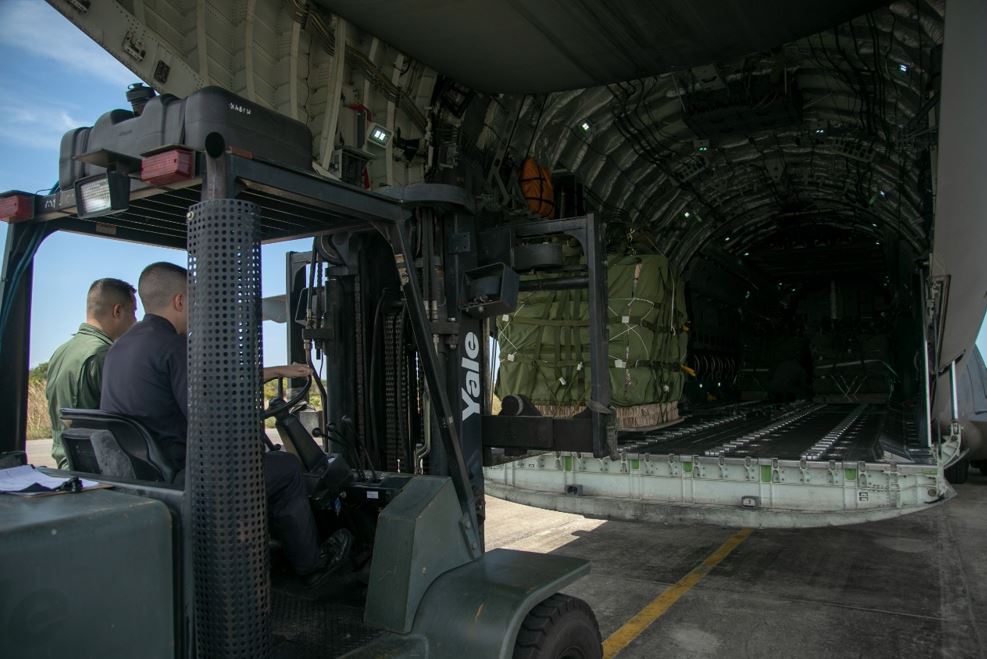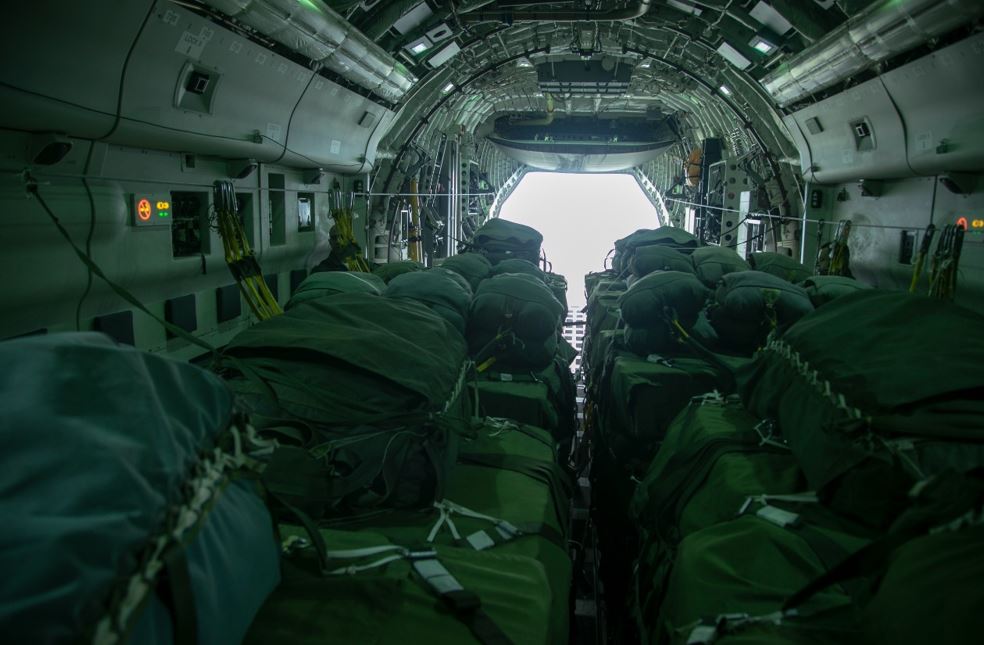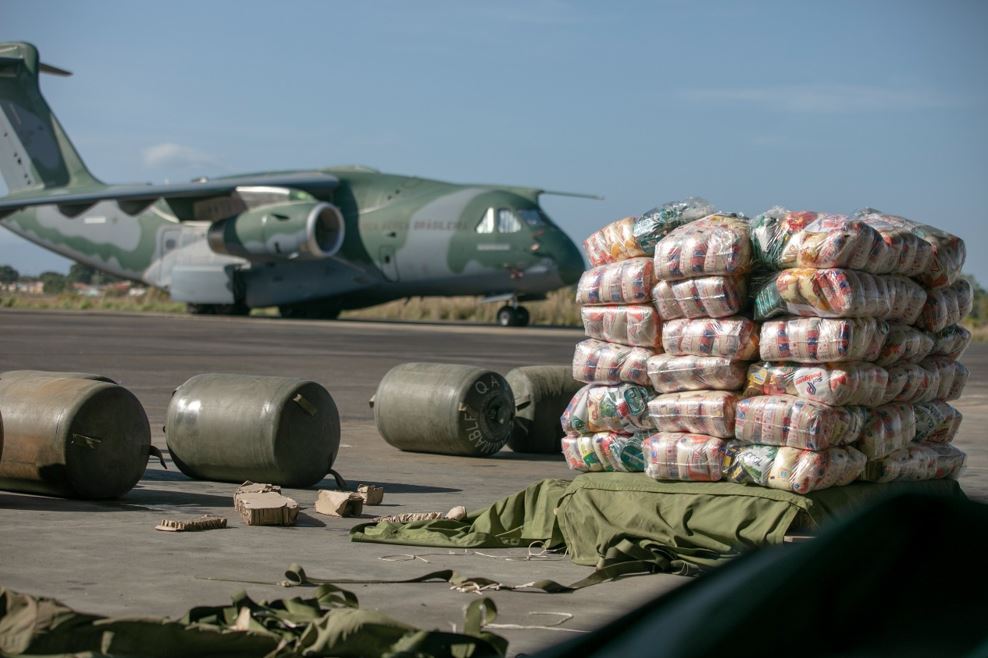Operated by Gordo Squadron, since the beginning of the mission, the KC-390 has launched 30 tons of supplies to indigenous communities
Air Force Agency, by Lieutenant Eniele Santos and Captain Alcoforado
The First Squadron of the First Transport Group (1º/1st GT – Gordo Squadron), carried out, on January 25, with the KC-390 Millennium Aircraft, the launching of 10 tons of food baskets in the Surucucu region, located in Roraima (RR). Upon arriving in the indigenous territory, helicopters from the FAB and the Brazilian Army (EB) transport the baskets to the various indigenous communities affected by the health crisis in the region.
So far, the Gordo Squadron has carried out 5 air launches in the area, totaling approximately 30 tons of food baskets launched.
And for this to happen quickly and effectively, two KC-390 Millennium aircraft – the multi-mission aircraft of the Brazilian Air Force (FAB) – are working around the clock with the use of air forces and resources to help restore the health of the Yanomami population, which, according to the Ministry of Health (MS), currently consists of approximately 30.4 thousand indigenous people, who have been suffering from malnutrition, malaria, acute respiratory infection and other health problems.


According to the pilot in charge of the mission aboard the KC-390, Major Renan Pacheco Pereira, the Gordo Squadron is always engaged in this type of mission and, when activated by the Aerospace Operations Command (COMAE), promptly answered the call for humanitarian aid.
“The action itself is real, the Squadron’s crew members are highly prepared to execute the launching of cargo. Today, in the Air Force, the KC-390 aircraft is fully capable of performing this type of mission. Thus, the actual employment of this aircraft is necessary,” he added.
Paulo Roberto Gonçalves Braga, the KC-390’s Loadmaster, explained how the cargo was loaded onto the aircraft, as well as the launch. “We always act according to the type of cargo, in this mission, CDS (Container Delivery System) type cargoes were used, which are medium loads. So, 12 CDS were assembled with basic baskets. We carried out the launches in multiple ways, launching first four CDS, then two more and finally four more. This way we divided ourselves to correctly evaluate the launching of the loads”, he explained.
Preparing and assembling the loads

The work developed in the Yanomami region is joint between the Armed Forces and the Federal Government. In this sense, the Brazilian Army has the role of coordinating the arrival of the food baskets, as well as their packaging, so they can be loaded onto the Air Force aircraft, which are operating in the mission. They are: KC-390 Millennium, C-105 Amazonas, H-60 Black Hawk and C-98 Caravan.
The Commander of the Battalion’s Cargo Preparation and Launch Company for folding, parachute maintenance and supplies through the air, Captain Pedro Mendes, described how the process of preparing the cargoes works. “Initially we receive the basic baskets and lay them out in layers until we close the right volume, which in this case generated around 900 kilos, per CDS, each containing about 48 baskets. Thus, we were able to close the tarp and install the parachutes to then board the aircraft and be launched by the KC-390,” he concluded.
Video with audio in Portuguese
Photos: Sergeant Lucas Nunes/ CECOMSAER – Video: Sergeant Lucas Nunes and Sergeant Neris/ CECOMSAER
*** Translated by the DEFCONPress FYI team ***
